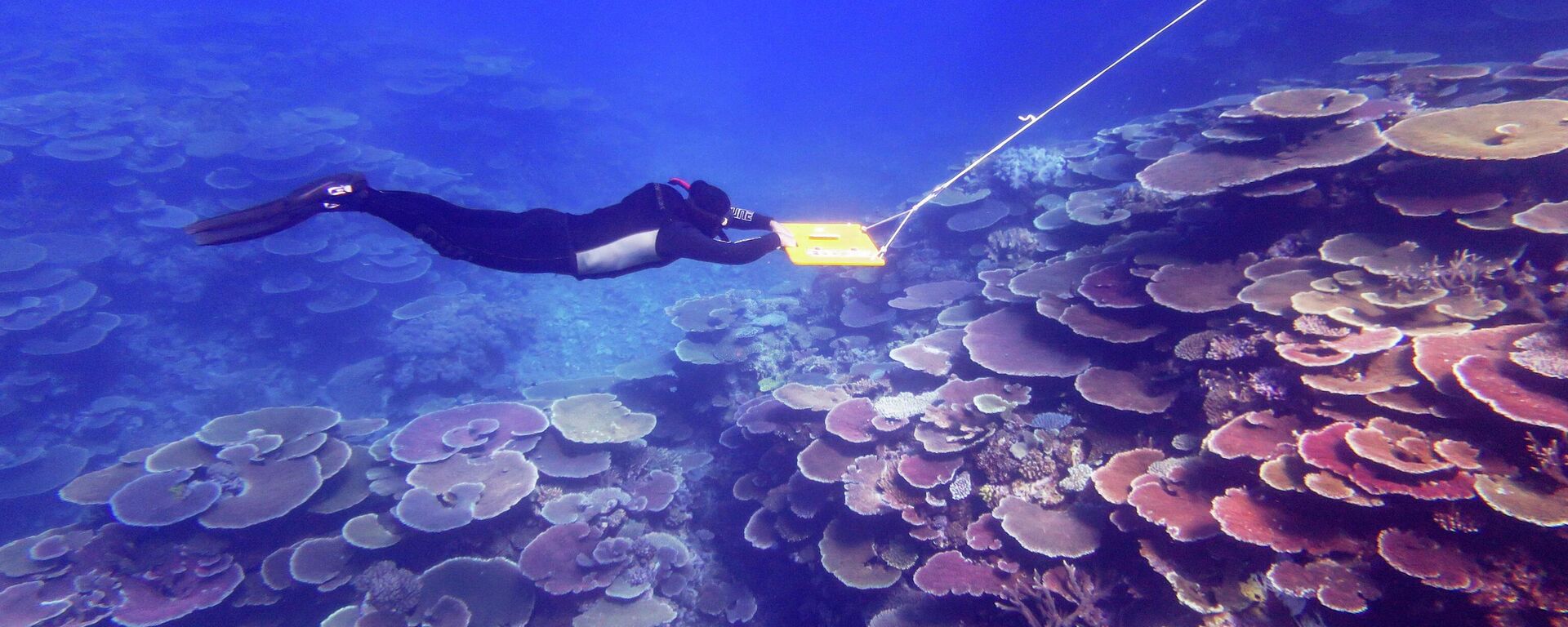https://sputnikglobe.com/20240704/artificial-light-across-coastlines-are-attracting-young-fish-and-their-predators-1119238223.html
Artificial Light Across Coastlines Are Attracting Young Fish, And Their Predators
Artificial Light Across Coastlines Are Attracting Young Fish, And Their Predators
Sputnik International
A new study has shown that artificial light at night (ALAN) across coastlines is acting as a predatory trap for young fish.
2024-07-04T04:16+0000
2024-07-04T04:16+0000
2024-07-04T05:46+0000
beyond politics
society
science & tech
nature
animal
marine life
marine animals
marine biologist
https://cdn1.img.sputnikglobe.com/img/07e8/07/04/1119240257_0:0:2400:1350_1920x0_80_0_0_9a980664d43301f9dd1cde76ae249bc7.jpg
A new study has shown that artificial light at night (ALAN) across coastlines is acting as a predatory trap for young fish.According to a satellite study conducted about a decade ago, nearly a quarter of the world’s coastline is artificially lit - although that amount could certainly be more now, explained Jules Schligler, the lead author of the study and a Ph.D. student at CRIOBE Laboratory (Centre de Recherches Insulaires et Observatoire de l'Environnement) in Moorea, French Polynesia.ALAN along the coast could belong to a range of human-caused activities including the use of electrical lights along roads, factories, residences and resorts near bodies of water."ALAN is everywhere and marine wildlife is not exempt from its effects," says Schligler. "A quarter of the world coastline is impacted and this level is increasing every year."For his test, Schligler focused on two dominant coral reef damselfish native to French Polynesia, the yellowtail dascyllus and the blue-green chromis. In testing 48 corals that were split into two treatments, Schligler found that light attracts fish larvae, and that their test sites that used artificial light recruited 2 - 3 times as many fish as naturally lit environments.“We can only extrapolate to a certain point but our findings, and other tests we did on crab and shrimp, generally indicate that marine animals are attracted to artificial light,” he said. Schligler also explained that while artificial light could appear to benefit predator fish, more research would be needed to prove that to be the case.“It could be bad for their sleep, or they could eat too much, we don’t yet know,” he explained."To better understand fish stock replenishment and conservation, it is crucial to take into account as many factors as we can, such as the rarely considered effects of light pollution,” he added.
https://sputnikglobe.com/20231003/uk-opens-marine-science-base-on-remote-pitcairn-islands-1113887169.html
Sputnik International
feedback@sputniknews.com
+74956456601
MIA „Rossiya Segodnya“
2024
News
en_EN
Sputnik International
feedback@sputniknews.com
+74956456601
MIA „Rossiya Segodnya“
Sputnik International
feedback@sputniknews.com
+74956456601
MIA „Rossiya Segodnya“
study, fish, coastline, light pollution, marine life, marine science, ocean, white noise, light noise, fish life, protect nature, protect fish, save nature, save fish
study, fish, coastline, light pollution, marine life, marine science, ocean, white noise, light noise, fish life, protect nature, protect fish, save nature, save fish
Artificial Light Across Coastlines Are Attracting Young Fish, And Their Predators
04:16 GMT 04.07.2024 (Updated: 05:46 GMT 04.07.2024) While it has long been understood that light pollution disrupts natural wildlife patterns, contributes to an increase in carbon dioxide (CO2) and even disrupts the sleep cycles of humans, it also has an adverse effect on marine ecosystems.
A new study has shown that artificial light at night (ALAN) across coastlines is acting as a predatory trap for young fish.
According to a satellite study conducted about a decade ago, nearly a quarter of the world’s coastline is artificially lit - although that amount could certainly be more now, explained Jules Schligler, the lead author of the study and a Ph.D. student at CRIOBE Laboratory (Centre de Recherches Insulaires et Observatoire de l'Environnement) in Moorea, French Polynesia.
ALAN along the coast could belong to a range of human-caused activities including the use of electrical lights along roads, factories, residences and resorts near bodies of water.
"ALAN is everywhere and marine wildlife is not exempt from its effects," says
Schligler. "A quarter of the world coastline is impacted and this level is increasing every year."

3 October 2023, 13:59 GMT
For his test, Schligler focused on two dominant coral reef damselfish native to French Polynesia, the yellowtail dascyllus and the blue-green chromis. In testing 48 corals that were split into two treatments, Schligler found that light attracts fish larvae, and that their test sites that used artificial light recruited 2 - 3 times as many fish as naturally lit environments.
“We found that the coral with the light attracted two to three times more fish compared to the naturally lit control site,” Schligler said. “The coral with the [artificial] light is a bad environment for the larval fish because there are more predators, opportunistic fish passing by, that ate them.”
“We can only extrapolate to a certain point but our findings, and other tests we did on crab and shrimp, generally indicate that marine animals are attracted to artificial light,” he said. Schligler also explained that while artificial light could appear to benefit predator fish, more research would be needed to prove that to be the case.
“It could be bad for their sleep, or they could eat too much, we don’t yet know,” he explained.
"ALAN has produced an ecological trap where these fish, misled by human activity, now prefer habitats where their fitness will be lower," says Schligler. "In other words, ALAN has the potential to attract organisms to a less suitable environment, generating a peculiar anthropogenic stressor."
"To better understand fish stock replenishment and conservation, it is crucial to take into account as many factors as we can, such as the rarely considered effects of light pollution,” he added.



